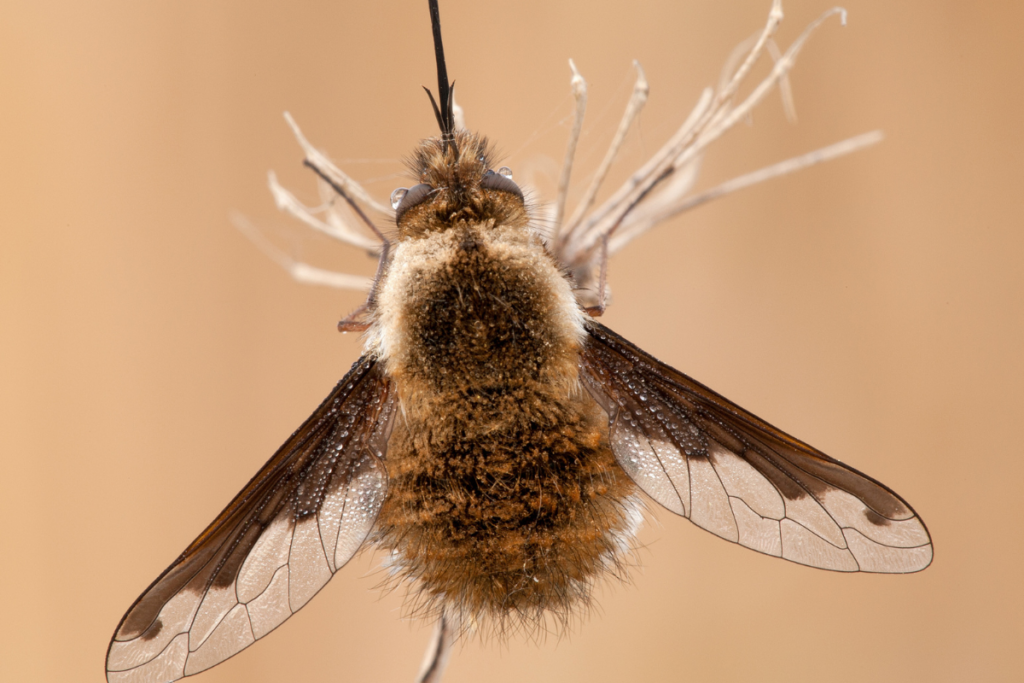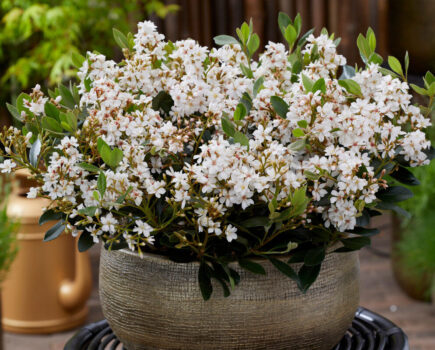Olivia Watts from the Field Studies Council, explains about these marvellous masters of mimicry and springtime pollination
As the winter chill fades and days get brighter, insects emerge from their shelters to enjoy the floral offerings of early spring. Since many insects depend on external sources of heat to warm themselves, they will only emerge when temperatures are high enough. Once the right temperatures are reached, we will notice our green spaces filling with beetles, butterflies and bee-flies.
So what are bee-flies?
Bee-flies are fascinating insects that have mastered the art of mimicry. These agile, fluffy flying creatures look similar to bees, but are in fact flies. They have only one pair of wings, where bees have two, and their most unmistakable feature is a long, straight, straw-like tongue, known as a proboscis.
One of the first bee-fly species seen in spring is the dark-edged bee-fly (Bombylius major), common across Britain and a frequent visitor to gardens. It has yellowy-brown hair, a long tongue and darkened wing edges extending halfway across each wing.

Garden benefits
After a long winter, bee-flies are hungry and looking for nectar, which they extract by various means. Firstly, they may hover alongside the flower, using their long tongue to reach the nectar. They may also land on petals, allowing them to reach nectar at the bottom of the flower. Finally, they may break through the bottom of the flower as a shortcut, an act known as ‘nectar robbing’.
While they gorge on nectar, they also collect pollen on their tongue, legs and body and transfer it between flowers pollinating them as they search for nectar. The dark-edged bee-fly is not a picky eater, and will visit many spring flowers. But if you want to see one, a patch of primroses is a great place to start, or sunny areas of bare ground where they bask to warm up.

Frequently Asked Questions
Q. Can bee-flies bite or sting?
A. No. Their long tongue may look fierce, but it is just used for feeding on nectar.
Q. How are they beneficial?
A. As one of the earliest insects to emerge in spring, they are crucial pollinators. They normally fly in March and April, but have also been spotted as early as February.
However, their life-cycle is not completely benign, for they lay their eggs near the nest burrows of solitary mining bees. Bee-fly larvae make their way into the bees’ nests, where they feed on the contents. Although this sounds like bad news for the bees, a healthy population of bee-flies means that you have a good population of bees.
Q. How many species of bee-fly are there in Britain?
A. There are approximately 10 different species, which vary in colour, ‘fluffiness’ and the wing patterns. The most commonly encountered species is the dark-edged bee-fly.
Find more tips, advice and articles like this at the Amateur Gardening website. Subscribe to Amateur Gardening magazine now.





